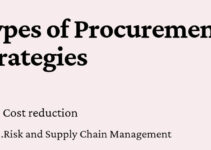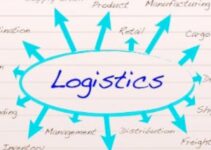Logistics and inventory management play a significant role in various activities of supply chain management like planning and controlling the storage of information and goods about the movement of stored goods. LM develops a balance between the initial point to the consumption point of the finished goods. Today, we’ll discuss logistics and inventory management; their definitions separately; key benefits, and differences.
What is Logistics Management?
Logistics management is one of the key areas of SCM and it focuses on the movement of goods and products from one point to another. Companies could employ LM while shipping final products to the customers and sending raw supplies and materials to the businesses and companies.
Some of the key elements of logistics management are as follows;
Storage
Businesses and companies could store their finished goods, inventory, or raw supplies in the warehouse or the storage facility of any 3rd party. Many 3PL companies are running their business, and they manage a significant portion of logistics for clients. However, warehousing is one of the main areas of business, and 3PL offers these services at a much lower cost.
Shipping
The flow of goods, materials, and items among different locations is a difficult and challenging part of LM. It is significant to track incoming material and inventory. You should send the finished goods and products to the customers, retail stores, distribution centers, and warehouses.
Tracking
Tracking the flow of goods and materials is difficult when you’re dealing with various orders in different directions. You could employ RFID and barcoding technology to locate the movement of goods and the flow of material. An effective and efficient tracking system means low cost, limited downtime, and faster service.
Network Design
The engineering of network design could make a significant difference in the efficiency of logistics management. When you are shipping goods from a smaller physical location; then it is significant to decrease the delivery schedule and comprehend the transportation cost and shipping availability.
Planning
If your business is growing in a particular season, then you could depend on the logistics system to deal with the fluctuation. When you are transporting goods, then the transportation and storage option could significantly impact their demand.
What is Inventory Management?
Inventory management allows businesses and companies to recognize what and how much stock to order in a particular time period. This strategy recognizes and reacts to market trends to make sure that they have sufficient stock to satisfy customer orders.
However, inventory becomes revenue after its sales; it falls under the category of assets in the balance sheet before the sale. Excessive stock would decrease the cash flow and cost you a lot of capital resources.
Inventory turnover is a great measurement of managing inventory. The accounting measurement would tell you how much stock you have sold in a particular period. A company wants more sales than keeping the stock; poor inventory turnover would result in the form of unsold stock or dead stock.
What is Logistics and Inventory Management?
The logistics and inventory management supports and facilitates various activities and functions of the company to launch its operations within the company. The function of LM is to quickly accept and maintain the stable inventory of the company.
Benefits of Logistics and Inventory Management
Some of the key benefits of logistics and inventory management are as follows;
Better Ordering & Inventory Planning
It is difficult to measure the right status of the product and their requirement if you don’t have any strategy to analyze or manage inventory. It is convenient to beware of the items in stock and how much and when to order. However, if you perform LIM in detail, then it would help the warehousing team to manage inventory in terms of space and cost.
Warehouse Management
Well-managed inventory would offer you better results for all the strategies. The process comprises fulfillment and cost saving of the finished goods to employ a warehouse for the effective management of inventory. Approximately 85% of the 3PL employ warehousing software and tools like WMS in the US
Efficiency & Productivity
If you are employing a good inventory management system, then it would take limited time, effort, and resources to manage inventory at various locations. The system amplifies the efficiency and productivity of the finished goods of the company.
Satisfied Customers
LIM has a direct connection with satisfying the needs and wishes of customers. If they trust you, then it would amplify your customer market. If you are delivering quality goods and services and satisfying the needs of customers, then it would lead you toward growth and productivity.
Logistics and Inventory Management – Key Differences
Some of the main differences between logistics and inventory management are as follows;
Focused Area
The focus of LM is on the movement of products and goods across the SC network. The IM focuses on dealing with goods, materials, and resources that the company needs for production.
Role
The role of LM is to deliver the right products and goods to the customers on time at their precise locations. The role of IM is to store products and goods and manage inventory in the warehouse.
Process
The process of LM comprises activities like planning, organizing, launching, and controlling the movement of goods, and the efficiency of products. The process of IM consists of storing, controlling, and tracking the inventory of the company.
Tools and Software
EnVision, Automatica ERP, and ViewPoints are some of the software for LM. The IM software and applications are Fishbowl Manufacturing, Fishbowl Warehouse, Trade Gecko, Upserve, and Ordero.
Objective
The goal and objective of LM is to deal with the flow of goods and inventory efficiently and effectively across the SC network to amplify the customer satisfaction level. The aim of IM is to manage the appropriate level of inventory in order to avoid a shortage of inventory.
Conclusion: Logistics and Inventory Management
After an in-depth study of logistics and inventory management; we have realized that LIM is highly significant for the growth and productivity of your business. If you are learning about LIM, then you should keep in mind the abovementioned benefits, elements, and differences.
Ahsan is an accomplished researcher and has a deep insight in worldly life affairs. He goes Live 3 days a week on various social media platforms. Other than research writing, he’s a very interesting person.


